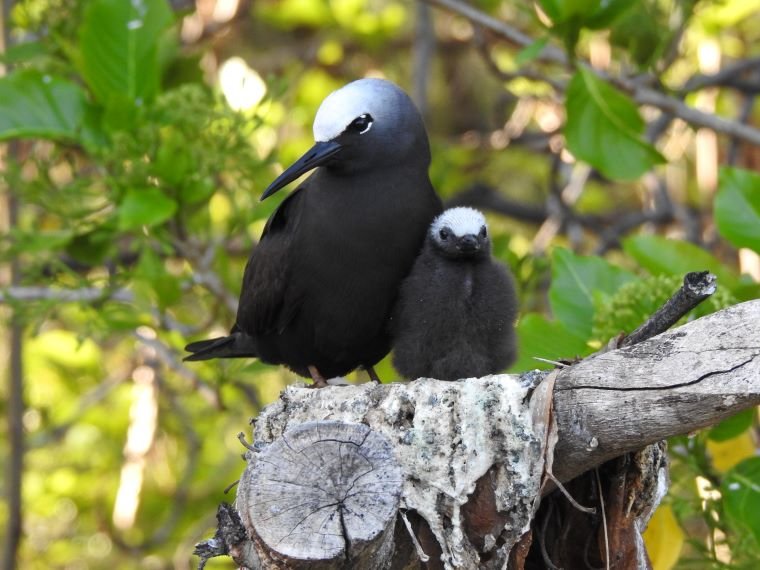
Black Noddy and chick, Lady Elliot Island.
Lady Elliot Island is a gem and a rewarding destination for any birder and naturalist.
It is a sub tropical coral cay, the most southern in the Great Barrier Reef. Surrounded by coral reefs filled with fish, sea turtles of three species plus the common visits of Manta Rays: it is a pretty exciting place for anyone who likes to skin dive.
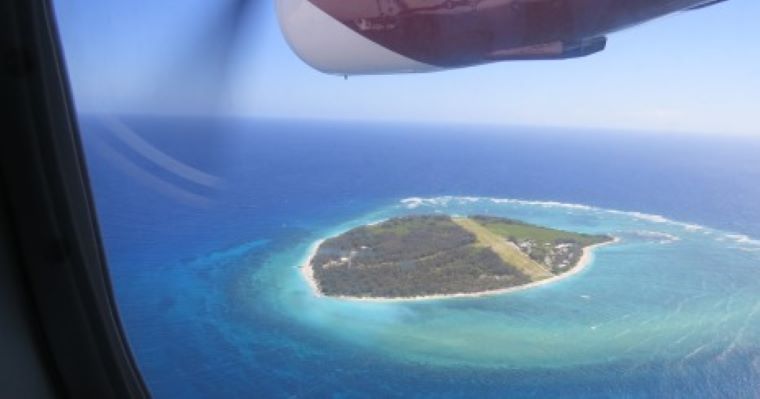 Lady Elliot Island, seen from the window of a small plane, is a small island cay at the southern end of the Great Barrier Reef. You can judge the islands size by the airstrip which takes up the entire width of the island.
Lady Elliot Island, seen from the window of a small plane, is a small island cay at the southern end of the Great Barrier Reef. You can judge the islands size by the airstrip which takes up the entire width of the island.
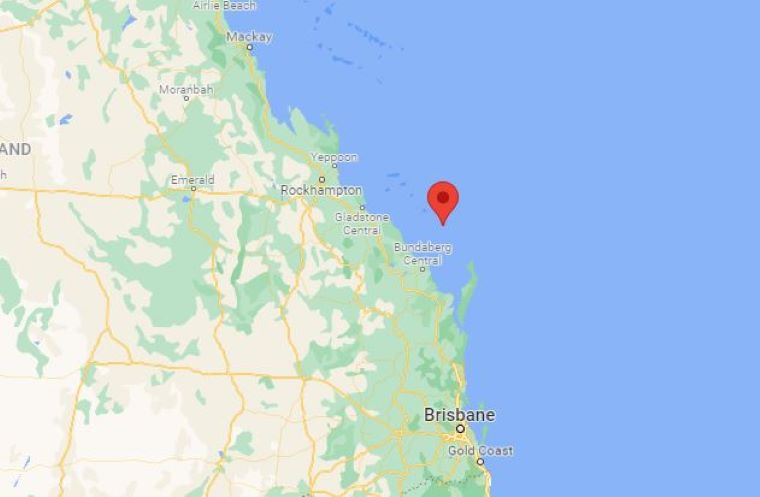
Google map showing the location of Lady Elliot Island, in reference to Brisbane, the state capital of Queensland.
It is also a great place for the birder for the fish have brought the birds and the island has supplied places to nest. No-one visiting the island can ignore the birds. They are everywhere. Every daylight hour, every where you look there is a bird flying through your view. Walking to the restaurant involves routine, although reflex, ducking as a tern or noddy comes a little too close to your head.
The most common two species here are the Black Noddy – a kind of tern and the Bridled Tern. They both nest here in good numbers.
The Black Noddy is a common, conspicuous, gregarious dark tern which is found around our globe in tropical waters.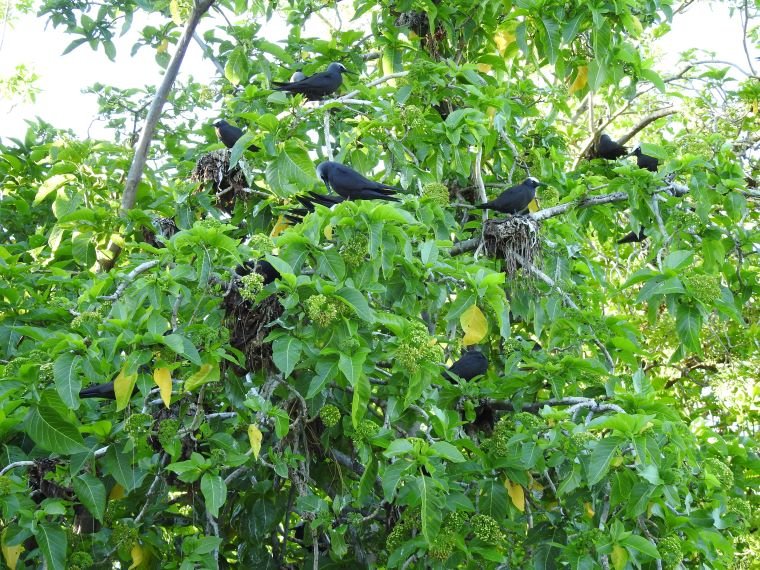
Why Noddy and not tern? Well, it certainly immediately looks different from every other tern, being dark with a white cap rather than the converse. So that explains why the reluctance to call it and its other congeners [Brown or Common and Lesser] terns. The term noddy has a couple of theories. The first refers to the courtship between the male and female which does involve nodding. The second, a term given to the birds by unforgiving and hungry sailors in years past who called them noddies, as synonymous with simpletons, for their naivety that allowed them to be harvested from their nests by hand. The genus name Anous, which means “unmindful” in Greek, further reflect this perception of the birds being both simple and naïve.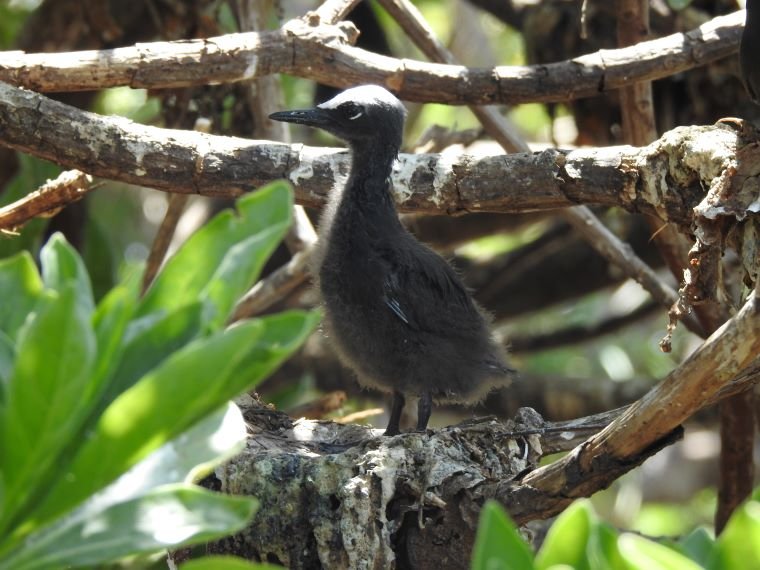 Black Noddy chick, bravely standing on its nest in a Pisonia Tree.
Black Noddy chick, bravely standing on its nest in a Pisonia Tree.
The Black Noddy is, in a behaviour that is typically un-tern, a tree nester. Not only does it place a nest in trees it actually makes a substantial nest – again unlike every other marine tern. Keeping the differences going, it regurgitates food to its young, behaviour more typical of gulls than terns.
On Lady Elliot Island in our southern Barrier Reef, where I visited in late 2020, the Black Noddies began breeding recently in 1985. The reason for their initial absence also explains their return. Lady Elliot Island (LEI) was clearly a wonderful seabird breeding island as attested by the huge reserve of guano. From the commencement of guano mining, demanded by the rapid rise in industrial agriculture, in the 1860s until the 1970s, LEI remained almost devoid of all vegetation and had minimal birds nesting on it. Since a re-vegetation program commenced in 1969, bird numbers have dramatically increased. In 2021 the revegetation project continues, in addition to the pesticide free weed control, and with them the growing number of trees and, with them, the tree nesting Noddies!
The Pisonia tree (Pisonia grandis), a common species found on coral cays, actually benefits by being crowded with Noddies’ nests. For starters it gains their droppings as fertiliser. Indeed the trees are ornithocoprophiles, plants that require bird droppings to fuel their growth. Second, Pisonia seeds are covered in extremely sticky resin, and birds that brush against them often end up carrying the seeds between islands. Sadly, many birds starve and die cruel deaths when their wings become burdened by an excess of seeds; their bodies ending up too as fertilizer for the nutrient hungry trees.
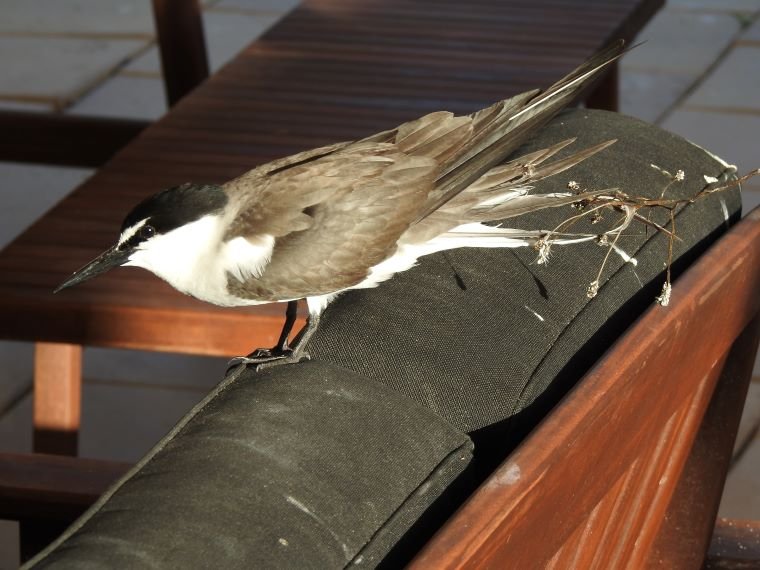 Pisonia seeds have stuck to the feathers of this Bridled Tern
Pisonia seeds have stuck to the feathers of this Bridled Tern
On the Queensland coast the only other similar species is the Brown or Common Noddy. It is larger, browner with a less pronounce pale cap. It is, by way of contrast, a ground nester.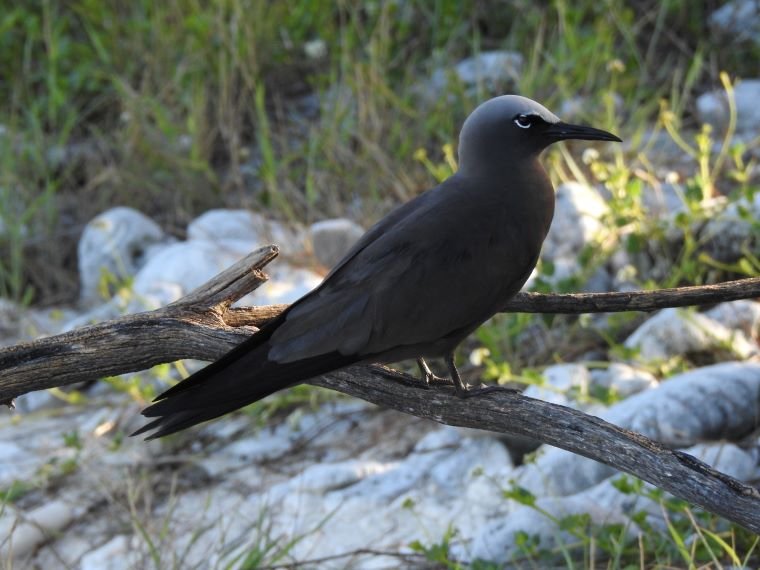 Brown or Common Noddy
Brown or Common Noddy
Other birds? For sea birds, there are other terns such as [Greater] Crested, Black-naped and, perhaps most spectacular, Roseates.  Roseate Tern and chick
Roseate Tern and chick
Constantly flying or sailing high above the island are Greater and Lesser Frigatebirds. They are here to make the terns’ and noddys’ lives a little difficult as they chase and hassle them for their fish catch.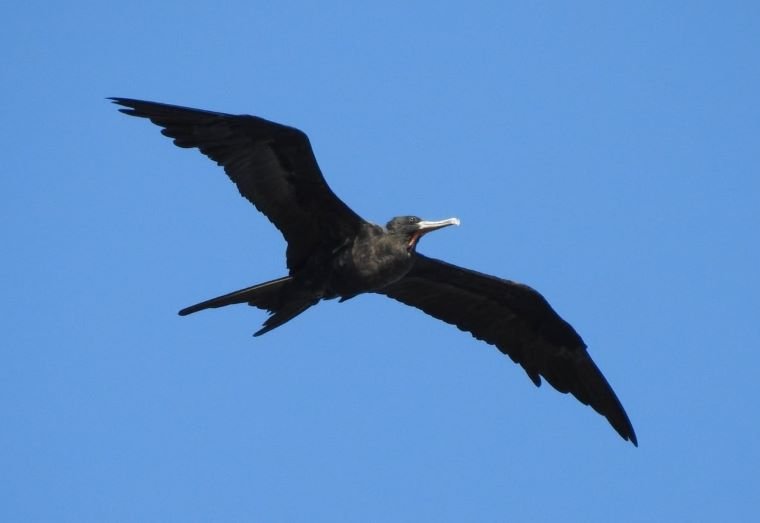 Great Frigatebird male
Great Frigatebird male

Female Great Frigatebird
Red tailed Tropicbirds nest here in small numbers and are one of the major reasons birders visit.
On land a small number of migratory waders visit; especially Pacific Plover and Ruddy Turnstone. Eastern Reef Egrets, mostly white phase, hunt the shallow reefs when the low tide allows. Buff banded Rails are everywhere, such that, you are not to leave your meal unguarded at lunch time as your table will quickly host one or two of these birds. The Silvereye has a distinct island sub species which can also be seen on the island. 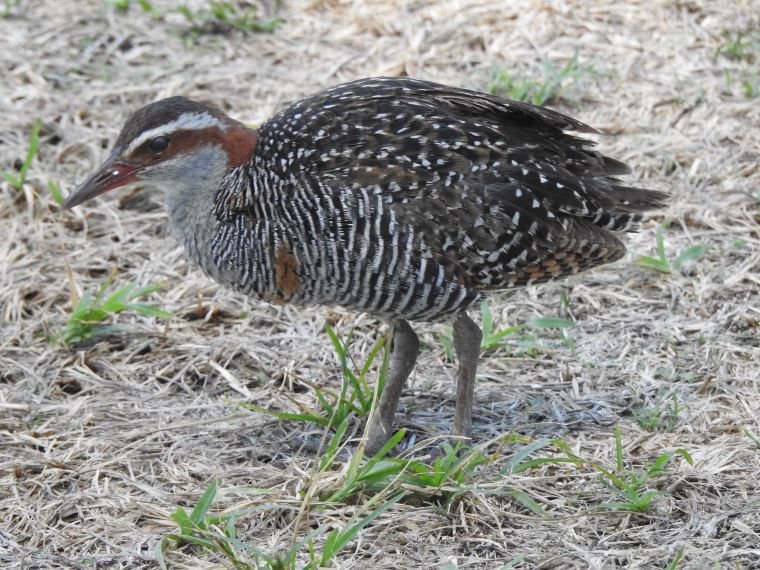
Buff banded Rail
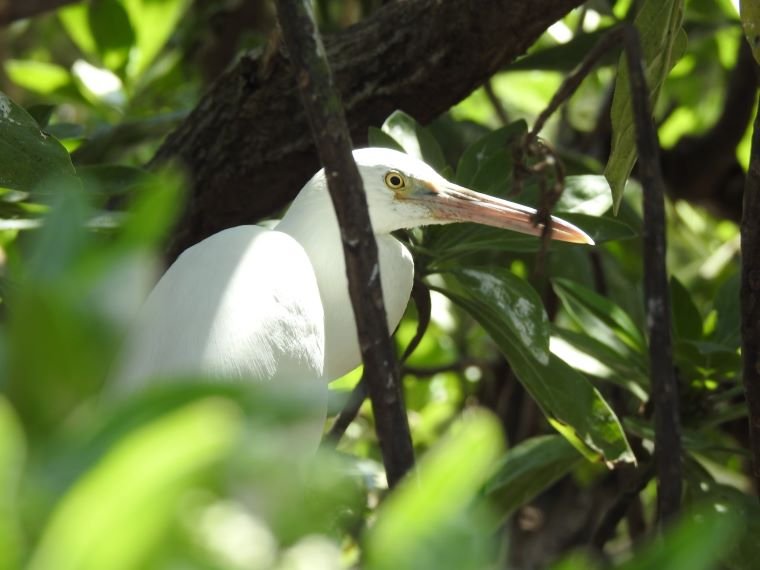
Eastern Reef Egret
Finally, another plug for the reef itself – it is amazing. Wonderful clear water reveals an astonishing diversity of fish and marine life. Each entry will offer new species, new colour and new delights.
The effort to get to Lady Elliot, for me, a three hour drive north before a short flight in a small plane, and expense are definitely worth it. I sincerely doubt there would be anyone, after visiting the island would not want to return.
All pictures [save Google Map] – Ken Cross













Leave a Comment